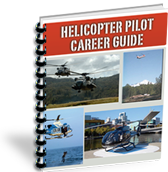Training Helicopters
If you’re about to begin your training for a helicopter pilot career than congratulations are in order. Learning to fly a helicopter is akin to trying to balance a basketball on a broom handle until the one day when it all "clicks".
There are a number of factors to consider before you begin training. You'll have to choose a geographic area, a flight school and an instructor (yes, you want to choose the instructor instead of having one assigned to you...more about this in a future article).
Sometimes new students leave out a critical piece of the puzzle. The helicopter that they'll learn to fly in. Unlike the fixed winged world where there are a number of suitable aircraft for training, the rotary winged world basically uses three.They are the Robinson R-22, the Schweizer 300, and the Bell 47. Each aircraft is piston powered and each has its strengths and weaknesses.
The Robinson R-22, designed by Frank Robinson and built by the Robinson Helicopter Company, is by far the most widely used helicopter in the flight training environment.
Its low acquisition and operating costs have made the R-22 the top selling civil helicopter in the world. The newest version of the R-22, the R-22 Beta II, improves on previous versions by adding additional items such as an auxiliary fuel tank, an engine speed governor, a rotor brake, and an increase in engine horsepower.
The Robinson is a very good helicopter but some criticize its responsive handling because it leaves students (who aren't as smooth on the controls as more experienced pilots) less of a margin for error. Others say the responsiveness of the helicopter is a good thing because students develop the awareness needed when transitioning into more powerful machines. As a whole, students who do their initial training in a Robinson are better able to handle the transition to larger and more powerful aircraft.
The Schweizer Aircraft Company builds the Schweizer 300. The newest variant of the Schweizer 300 is the Schweizer 300 CBi. The CBi’s most notable changes are the use of fuel injection which prevents carburetor icing, rotor overspeed protection and a low rotor RPM warning system.
The Schweizer is roomier than the Robinson. It has a wider cockpit and more headroom. It also has exceptional visibility especially towards the rear. It is also more forgiving than the Robinson, which can be both a blessing and a curse. Its easier handling characteristics make it easier for students to fly but those same characteristics make it more difficult, in general, for students to transition into more complex helicopters.
The last training helicopter used is the Bell 47. Developed and built by Bell Helicopter, the 47 is the granddaddy of this group. It was certified for civilian use in 1946 and has trained generations of pilots. Though it’s not used as a trainer as often as it once was, there are still flight schools that use it. The 47 has a large cockpit with a wide bubble canopy, which affords it excellent visibility. The Bell 47 is a good training helicopter but the limited availability of parts makes it an increasingly rare sight at flight schools and airfields around the country.
All of these helicopters are suitable for training. What you need to do is ask yourself what you plan to do when you finish training. Most students become flight instructors when they finish training and since Robinson dominates the light helicopter and training markets it might make more sense to have your initial instruction done in a Robinson.
Also, the provisions of SFAR 73 set a minimum number of hours that you must have if you want to act as PIC of an R-22. If you do your training in the Schweizer or Bell and teach in a Robinson you'll have to satisfy SFAR 73 by getting R-22 time ( more often than not by buying time).
Regardless of the path you choose, each of these helicopters will prepare you for bigger and better things.
Learning to fly a helicopter is an experience you won’t soon forget. Work hard but don't forget to savor it.
Get our free guide and take a look at the numerous career opportunities available in commercial/government helicopter aviation.
Just fill out your name and e-mail address in the boxes below.